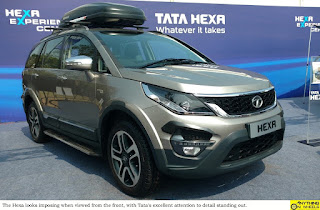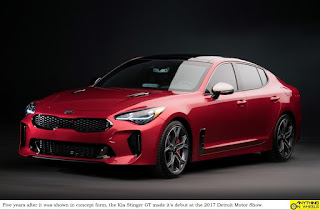Now that the PSA Group and the CK Birla Group are coming together to assemble and sell cars in India, it paves way for two 'so-far-elusive' automotive brands to pique our interests. We are talking about Peugeot and Citroën here, both owned by the PSA Group of France. You might argue that Peugeot's India story has been a soap opera of sorts so far but, this time around, they appear to be pretty darn serious about it.
While details are still under wraps, that doesn't stop us from pondering over the model lineup of the two brands and prepare our wish list for them to consider. Let's start with, well, Peugeot.
Peugeot
Peugeot isn't unknown in India. Unfortunately, they are remembered more for the wrong reasons than for the right ones. Nobody we spoke to seem to remember Peugeot's whiny yet frugal 1.5-liter diesel engine that powered the erstwhile Zen D, Esteem D and Accent DLS. But, almost every one of them could recollect the French brand's unceremonious first stint in India that ended as soon as it began. As daunting as it seems, Peugeot's international lineup appears to have just the right models that could help the brand overcome these hurdles and make an impact in the Indian market.
Just like the rest of the world, SUVs and crossovers are the fastest growing segments here in India. A brand yearning to arrive in style and create a stir should look no further than launching one of these here. This is where Peugeot could make a difference as they have not one but two very competent crossovers to choose from.
Based on an all-new platform that's stronger, lighter and more agile, the 3008 is the bigger of the two that competes with the Nissan Qashqai, Kia Sportage and Hyundai Tucson in Europe. This newest crossover in Peugeot's lineup has received rave reviews from the critics globally and would be a nice 'image-booster' offering to start with in India. With a price tag that's expected to hover around INR 20 - 30 Lakhs, the 3008 would be strictly limited in its reach and appeal though.
On the contrary, the 2008 is the one that could make Peugeot popular in India. Spun off the 208, the 2008 is smaller than the 3008 and comparable in size to the Renault Duster and Hyundai Creta. In fact, the Duster is what the 2008 competes with in Europe and there is no reason why it can't do the same here in India. If priced sensibly, the 2008 could turn out to be that one big hit the folks at PSA head-quarters in France badly want.
If it intends to make up for the time lost, gain market share and go full throttle, the 108 and 208 hatchbacks are what Peugeot should be looking to bring in. The 108 is a city car that's priced in the whereabouts of Hyundai i10 in Europe. It is smaller than what you, me and most other Indian families prefer though. That's where the 208 comes in. Bigger, better and more stylish than it's sibling, this premium hatchback can take the fight to the i20 and Baleno. For that to happen, the 208 should have a high local content and, crucially, an aggressive price tag.
While the aforementioned models were all designed and developed to cater to highly-demanding Europeans, Peugeot also has a car that's tailor-made for the emerging markets. Say hello to the 301! We bet this car is an integral part of Peugeot's plans for India already and wouldn't be surprised if the 301 becomes the launchpad for the brand in 2020. If and when it gets here, this midsize sedan would rival the Honda City and Maruti-Suzuki Ciaz and possibly positioned in the same price bracket. Problem is, the current 301 is already 4 years old. Peugeot would do well considering the next-generation 301 for India as bringing in the current model in 2020 would be akin to flagging a dead horse.
Well, that's five already for Brand Peugeot! Let's stop right here and look at Brand Citroën, shall we?
Citroën
One of the perks of owning more than one brand is that there is always another option if one doesn't click. When Opel earned a reputation for being expensive to maintain, GM didn't think twice to shut down the brand and replace it with Chevrolet.
PSA is in a similar position. If the top honchos decide that Peugeot's tarnished brand image would be too much to handle in an often unforgiving market like India, Citroën could be the one leading PSA's charge. Since the two brands effectively have the same portfolio wrapped in different external forms, PSA has a real chance of getting away with what happened in the past.
In that case, the best bet would be to bring in the C1 and C3 hatchbacks. The C1 is nothing but a 108 underneath while the C3 is just a different-looking 208. If these two hatchbacks prove to be too expensive for our market, the C4 Cactus, Citroën's take on the Peugeot 2008 crossover, is another option.
While its true Citroën does not carry the negative baggage from the past like Peugeot, they come with their own set of challenges. In a conservative market like ours, the unconventional, often-weird, love-it or hate-it styling of the Citroëns could prove to be a dampener. Their premium positioning relative to Peugeot is yet another thorn in the bush.
But hey, it could work out well for PSA.
Now that we are done with our wishlist, let's wait and see how many of these are fulfilled.






































